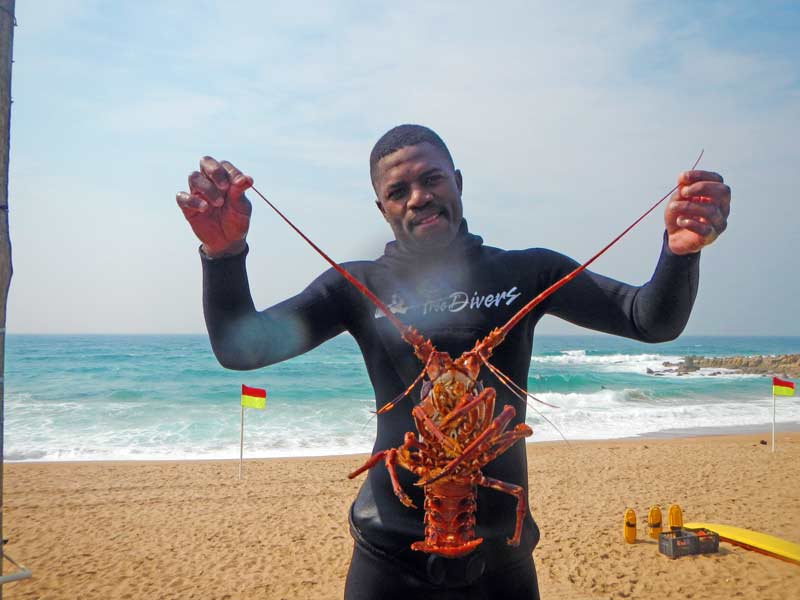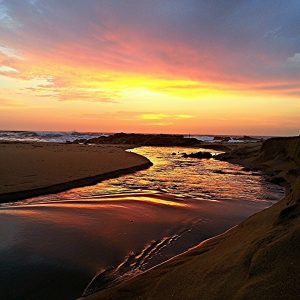
Images from Africa Marine & Leisure Expo
Natalie Heart Photography had a busy weekend at the Africa Marine & Leisure Expo at Scottburgh, this weekend.


Natalie Heart Photography had a busy weekend at the Africa Marine & Leisure Expo at Scottburgh, this weekend.


Since its inception in 2012, the Africa Marine & Leisure Expo presented by UGU South Coast Tourism has championed both local and national conservation initiatives alike. The event’s huge popularity has always come as a result of its unique dual focus- on celebrating coastal living and the marine environment on one hand, and promoting the conservation of that environment on the other.

The 31 October sees the closing of the crayfish season:
Closed Season Crayfish – 1st Nov – 28th Feb
Anti Poaching Hotline – 083 380 6298 – 24hrs

Crayfish are also called rock lobsters or spiny lobsters. Ours in Natal and Mozambique – the red ones, are called East Coast Rock Lobster (Panulirus homarus) – they taste the best, but are non-commercial and cannot be bought, sold or traded. They are not the ones you get in restaurants. They are the West Coast Lobster (Panulirus lalandii) – similar red look, but with a bigger head and smaller tail, in comparison to the East Coast model.
Rock lobsters are crustaceans with a carapace, and a tail that fans out at the end. This carapace (the head), is how the lobster are measured for legal size requirements. The carapace – measured from the spot between the horns over the eyes, to the end of the head – must be a minimum of 65mm. Soft shell crayfish (they have just molted), and crays in berry (carrying eggs), are not allowed to be taken at all.
The reason for the closed season is that they breed in the warm summer months. A crayfish takes 3 years to reach sexual maturity, which is approximately the legal size for capture – 65mm.
Following the spate of downpours lately in KZN, the rivers have swollen, some bursting banks and most bursting their closed river mouths.

The deluge has caused floodwaters to collect silt and debris and throw it all way out to sea, forming the long awaited blue water line that hunting gamefish so love. Deep sea fishermen love it too, trolling baits along this seam between the deep blue Mozambican Current and the dirty water produces dorado, sailfish and marlin.
However, aside from the obvious pollution that the rivers carry with them, the brown/orange colour is not actually all that bad. It’s from a pigment found in the earth and rocks in the catchment areas way upstream, that provides the discoloration. It’s the same stuff that make the Orange River orange – sometimes our rivers do look more orange than brown.
The brown water is not all that good either however – it does carry pollution out of all our valleys and catchment areas and pukes it into the ocean. If you surf in it, your ears get in big trouble. If you swallow it you get sick. Sharks love it. And it carries and conceals obstacles like logs and dead cows.
It is highly advisable to swim or surf where the water is cleaner. This alternates almost daily with the winds, but you can always find a clean beach somewhere if you travel up and down the coast enough. Being as far away from the Umkomaas and the Umzimkulu as you can be is your best bet for safe bathing or surfing. The water cleans up gradually as the Mozambican current eventually carries the silted water away – and by the time it’s March (cyclones considered), it starts to clean up crystal again.
There are still Humpback Whales being sighted on the southern KZN coast, travelling south with determination.

It sure seems, that despite the Japanese, the Humpback Whale (Megaptera novaeangliae) population is making quite a rapid comeback. Kudos to Sea Shepherd and Greenpeace! The current population in the southern oceans is about 50 000, way down from pre whaling population of 125 ooo. In 1966 Whaling was conditionally banned, and the population is making a steady recover ever since.
Their migration pattern in our southern Indian ocean is quite simple. From the icy deep southern Atlantic waters, where food is plentiful, they fill themselves up and head north for our winer. They head away from the rich waters of the southern ocean, up into the tropics, where there is a lot less marine life. Tropical waters are like a desert compared to the cold Antarctic, and this is why they come up here. To give birth to fragile calves out of the way of predators and wild winter seas.

However, they are not completely in the clear. Killer Whales, Orcas – come right up into the tropics to eat the newborn calves. This normally happens in April or so.
It’s not entirely true that there is absolutely NO food for the whales in the tropics – there is still plankton and fry. And, they eat sardines too! The calves have got kilolitres of milk to get through before the long swim back into the cold. They are weaned within a year.
Down in the southern icy waters, humpback whales feed ferociously in bursts, often teaming up to effect ingenious ways of trapping entire shoals of small fish. They work together to create a maelstrom of bubbles around and below a shoal of fish. The bubbles come to the surface, shrouding the hapless fry. Other whales stay down and herd the shoals upwards into the maelstrom of bubbles. And the humpbacks come up from the bottom in succession, mouths agape and swallowing thousands of fishies all at once!
We can expect the re-appearance of our humpback whales next year as early as March, and they then hang around until October.
Bon Voyage!